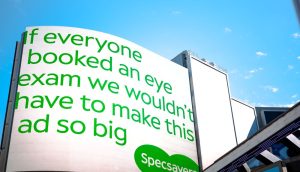The last several months have been tough on most media providers, but OOH has had a particularly big shake-up.
Lockdowns meant a standstill of foot, vehicle and transit traffic, and the once-growing medium slowed to a halt. According to Mediabrands unit Magna, OOH investment in Canada will drop by 16% this year.
Nevertheless, industry pros say now is a more crucial time than ever to gather (virtually) and share learnings, as well as look to the future and find new opportunities. The third annual DPAA Video Everywhere Canada Summit will be held via Zoom July 15.
One leader bringing plenty of learning is Kevin McDonald, CEO of Kinetic Canada. McDonald will sit on the programmatic panel sponsored by AI-based location ad serving platform, Hivestack, along with Kruger CMO Susan Irving. Specifically, they’ll be discussing a case from early on in the pandemic and how they see the future of OOH playing out.
McDonald details the case to MiC: “It literally started the week or two before the COVID-19 lockdown. Ironically, the campaign was for Cashmere toilet paper. When we started the campaign, it was supposed to go on for four or five weeks – then COVID-19 hit, and you know what happened with toilet paper.”
Kinetic was able to gather a lot more data and insights during the three weeks the advertising was in market, which will be helpful when the campaign resumes soon.
McDonald says the brand was targeting three distinct consumer segments. They all operated differently which drove different triggers and different outcomes so multiple pieces of contextually relevant creative were produced. “The work we did was to enable us to deliver the right messaging at the right time to the right consumer group. It was all served up programmatically. The benefit of programmatic was to be able to change creative messaging but also the location where the messages were being delivered on the fly.”
Although McDonald will be sharing more details about Kinetic’s and what they learned from this campaign during the DPAA summit, he says the agency did notice that when serving up ads, geo-fencing within one kilometre of the point-of-sale drove higher footfall into those retail locations where Kruger products were sold.
He says, “By geo-fencing or outlining a footprint of the retail location, we’re able to look at the mobile device IDs that enter that geo fence. We know how long they’re in there. That’s the macro-movement pattern.”
Hundreds or thousands of mobile IDs are captured within that boundary, then they’re followed throughout the day to see what routes they predominately take to get to the store, what postal code, and what FSAs they live in. This gives the agency the traffic movement pattern showing how far people are willing to go to buy a specific product or to go to a specific retailer.
“Where it gets a little bit tricky is when consumers go into Loblaws or Metro, we don’t necessarily know if buying the Cashmere toilet paper,” says McDonald. “Then we rely on data from the client because they’re getting point-of-sale data from the retailers. We rely on that but we also look at sales by categories by store locations.”
He says digital and programmatic have been a stronger focus for clients since COVID-19. Coming out of the first wave, digital space has skyrocketed because clients want to have flexibility and are a little bit more cautious about committing to static OOH buys just in case there’s another virus spike.























